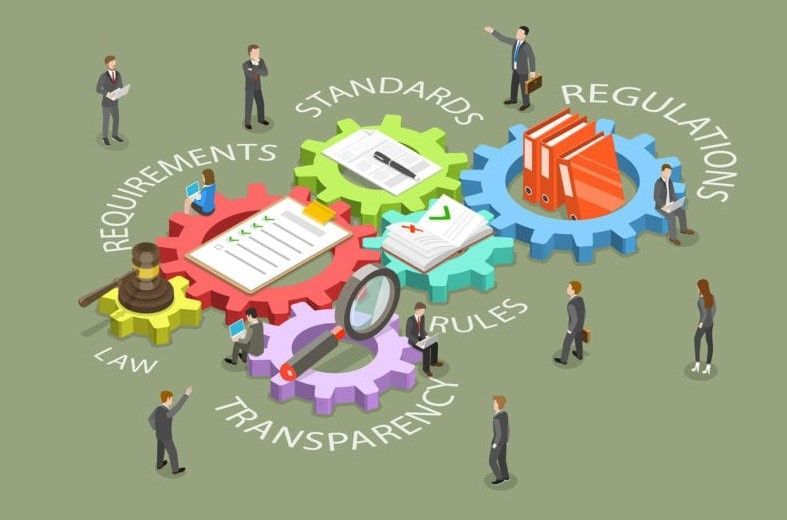Shaking Up Your Sales Territories?
August 14, 2025
Thinking about increasing revenues this year by taking on a new sales territory or realigning the ones you have?
It’s a good thought because intelligent testing of new territories or realignment of current ones can boost productivity. Even fifteen years ago, a comprehensive study by Andris Zoltners and Sally Lorimer indicated that territory alignment “often has a high impact at a low cost.”*
Sometimes, that impact can come from applying commonsense to statistics you have at hand but might not have looked at closely enough.
For example, after reviewing a geographic sales analysis for one of our long-term manufacturing clients that sells to municipalities, we suggested calling the lowest producing customers on the phone instead of meeting with them in person. Most of those customers were “rural” in relation to their more productive counterparts. Our calling campaigns have not only increased our client’s selling time with the best customers but also reduced the company’s travel costs.
Expanding business by expanding territories is a time-honored business practice. Success ostensibly hinges on how well sales are managed in those territories. Sounds simple enough, even fair. But veteran sales reps and managers know that’s not the case at all. Myriad variables stand in the way.
For instance, Zoltners and Lorimer note that there are “over 1,000 ways to assign just 10 accounts to two salespeople.” They also found that nearly 60 percent of sales territories studied were not properly balanced with respect to territory potential and sales force workload. Overall, balancing territories yielded as much as a 7 percent sales increase. In one case, realignment produced a 13.7 percent decrease in travel time leading to a 2.7 percent increase in actual selling time.
In addition, in our experience, if you put one of your best performing salespeople into a new territory he or she will probably continue to be one of your top producers even if the market potential is considered less. However, if the market potential turns out to be too much less or if your analysis and design processes are flawed, even the best salesperson can fail.
Putting your best in harm’s way in new territories can yield surprising insights. For example, if current accounts in the old territories are large and built on long-term relationships, you may find that you’ve been paying bonuses to your best producers not necessarily based on the quality of their selling skills but on the quality of their territories.
What to do? How to decide?
The ideal approach is to pull together as much market information as possible and expend serious time and effort assessing it. Depending on your resources and internal expertise, you can do this yourself or, probably better for any number of reasons, bring in outside help. Territory optimization software is also available.
Once you have some insights and conclusions in hand, deciding whether to hire new reps for new territories (or for current territories), reassigning your salespeople, or changing another aspect of your sales process should go much faster.
The 7 Questions
- Who Will Develop the Market? Options are direct outside or inside sales, independent representatives, distributors, integrators, your existing sales team on a campaign basis, or even buying an existing firm within the territory.
- Boots Already on the Ground? Use independent professional salespeople already established in the territory. A bonus is that, if things work out, you have a leg up on hiring your own people or staying with independents. You can also take it a step further by identifying salespeople already selling to your targeted accounts. Who knows-maybe they’re having lunch next month with a company perfectly matched to your target.
- Why Not “Drag and Drop”? Set face-to-face appointments across a potential new territory using internal or external callers. Then “drag and drop” a salesperson at major cities across the territory with qualified prospects.
- What about a Blitz? Send your sales team in for a two-to-three day blitz of the new territory or proposed new territory. Start each day with a meeting covering strategy and the previous day’s results. Then have your team fan out and make calls. Awareness will grow quickly and the hunters will learn new buying motives appropriate to the new market. This will also create good cross pollination of ideas from within the sales team.
- Who Are the Usual Suspects? Find and visit companies that fit the profile of existing customers in your current markets. Set boundaries for company size, NAICS codes, or other measures and learn what companies in the new territory are similar in demographics to your current accounts.
- Which Puzzle Pieces Fit? Consider which parts of your company will go into the new territory and how you’ll know what makes sense. Possibilities include only sales, some administration, or an entire operation including manufacturing plants and distribution.
- What Can You Learn by Listening? By that we mean listening closely to what the market is telling you about territory alignment. Here’s an example.
One of our clients wanted to test three vertical markets in the Chicago area using our lead generation and appointment-setting calling services. Market #1 showed great potential. Setting appointments went smoothly, and, from experience, we knew sales would follow. Market #2 seemed dead due to economic conditions at the time. And, Market #3, well, there didn’t seem to be any potential there in good times or bad.
To us, these results signaled a change in strategy. Our client agreed that we should focus on the successful vertical (Market #1) but not just in the Chicago area. We expanded our calling for Market #1 to five or six major metropolitan areas in different locations throughout the US.
Key Point: Be flexible and pay attention to what the market is saying to you, perhaps in spite of what you think you know. As a general, Dwight D. Eisenhower relied on this principle in battle and, as president, in politics: “I have always found that plans are useless but planning is indispensable.”
If geographic expansion or realignment is in your future, please take some of our observations into account. If you are undecided, we can also help you design a decision-making process that will help you evaluate your options effectively.
Just get in touch at 847-446-0008 or pkrone@productivestrategies.com.
*Zoltners and Lorimer (ZS Associates). “Sales Territory Alignment: An Overlooked Productivity Tool” in the Summer 2000 issue of the Journal of Personal Selling & Sales Management. Note: We’re citing this study, even though it’s not recent, in part because the authors had developed an extensive knowledge base with more than 300 companies in 15 industries and applied an academic rigor to 36 cases for this study. They had also designed some 300,000 sales territories.
The post Shaking Up Your Sales Territories? appeared first on Productive Strategies, Inc..










